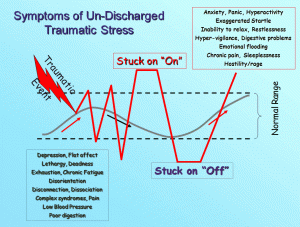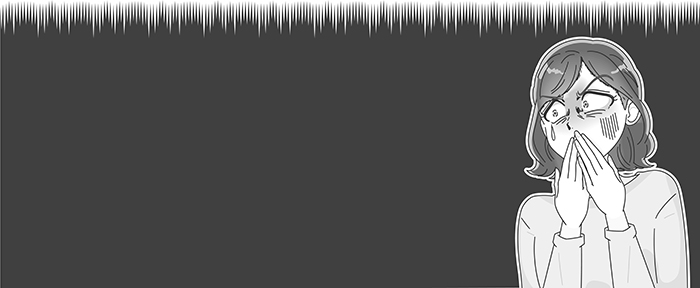There are many reports of people having more frequent and more vivid and unusual dreams during this pandemic. Whilst I personally haven’t seen much of a change (mine are always offbeat), I began to wonder why this increase in COVID dreams might be the case for others.
The main function of dreams
I have always been interested in dreams. However, since studying psychoanalysis during the past year, I have more understanding of the depth that dreams contain. Freud called dreams the ‘royal road to the unconscious’ and said that the main function of dreaming is to keep us asleep.
During a dream, content from our unconscious can be presented in a way that is acceptable or digestible to the more conscious part of our mind. This partly explains why dreams can seem so weird. To ensure this presentability, our mind codes our dreams with symbols and other content is switched to ensure that the dream gets past our internal censor. Remember, the unconscious mind is far from middle class!
Night terrors – when dreams fail
If this process fails, we end up in a night terror and are woken from the dream. This is a sign that our capacity to dream has been overwhelmed by the indigestible stuff from the unconscious. This might partly explain the nature of our COVID dreams.
Creative acts
Freud said “ the function of a dream is fulfilment of a wish to appease a worry. When this works, an anxiety is satisfied, and you can sleep”. This is how dreams keep us asleep. Clever, eh? Today, we have elaborated on this understanding and dreams are seen as creative acts of psychic work to resolve conflicts or challenges, and even come up with something new. As a chemistry student many years ago, I remember being told about Kekule’s dream of a serpent devouring its tail (the ancient alchemical symbol of the ouroborus) which lead to his discovery of the benzene ring.
Understanding our dreams
However, these are not the only reasons to understand our dreams. Dreams are made of darker stuff sometimes, a wish to satisfy an instinct from the darkness of the Id. And our id holds the most ‘terrible’ instincts, even of ‘murderous’ intent. I am talking of the baby’s rage for a withholding breast. On thing is certain though, dreams have very personal meanings and you cannot look them up in a dream dictionary to understand them. Whilst there may be universal symbols at play within them, even these have deeply personal relevance.
Multiple layers of meaning
For example, I recently had an extremely upsetting dream that involved a snake. In part of the dream, the snake was cut into many pieces that were still alive and crawling around the floor. This dream would have different meanings for others, especially with such an ancient symbol of a serpent. However, I own a pet snake which I love dearly, and I have also taken up carving as an art form. One dream has multiple layers of meaning. But one (superficial) meaning of this dream for me, was a wish to not harm my pet whilst I am carving. It was a warning which alleviated this worry.
Why are we having covid dreams?
Overtly it seemed to me that the increase in vivid and strange COVID dreams was because of the trauma of COVID-19 that is around us on a daily basis. The content of dreams is often influenced by our day or recent events on our life – Freud called these top down dreams. Others are more ‘bottom up’ and come direct from the subconscious.
Knowing this explains our covid dreams another way. With less going on in our daily lives, more bottom up material is coming from the depths of our unconscious mind (if it can get past the censor in unusual ways) which is just weirder and more vivid. Freud tells us:
“Every dream that is in the process of formation makes a demand upon the ego for the satisfaction of an instinct, if the dream originates from the id, for a solution of a conflict, the removal of a doubt or the forming of an intention if the dream originates from a residue of preconscious activity from waking life. The sleeping ego is however focused on the wish to remain asleep. It feels this demand as a disturbance and seeks to get rid of it. The ego succeeds in doing this by what appears to be an act of compliance; it meets the demand with what is, in the circumstances, the harmless fulfilment of a wish and so gets rid of it.”
Interpreting dreams
So what chance do we have of making sense of such weirdness? It’s not easy, as you might guess. Despite what the abundance of dream dictionaries and the like seem to tell us. The manifest content is the story we remember and write down or tell our therapist. Yet it is the ‘latent’ content which we need to understand, the hidden message in the dream. By understanding this we have clues to our unconscious conflicts that, in a process like psychotherapy, can greatly aid in our self-development and progress.
To search for the hidden messages, here are a few tips:
- Look out for displacement – this is where the emphasis is moved from one item in the dream to another. So that something that seems meaningless is given great focus or there is serious anxiety in something bland
- Condensation – the free associations and the links that the dreamer is encouraged to make when thinking about the dream. Or perhaps noticing the play on words in dreams
- Secondary revision – how we wrap up the story of the dream (and maybe distort it). I did this with my snake dream (there was more to it).
- Symbols (considerations of representability) – this is the visual way metaphor and simile are represented in dreams (a way of by-passing the censor). It is usually an item that represents something completely different. But remember, these are often very individual.
Example dream
Maybe it would help with a recent example from a client. (I have permission, though am keeping all detail anonymous). My client dreamed he was walking down a mountain side. The path was winding and rocky and with big boulders and gaps to navigate precariously. The client found himself with a baby, there were onlookers who seemed to be family and friends and who were not threatening. The client had a dilemma – he wanted to get safely down the mountainside to the base, he wanted to do it for himself but in a way that kept the baby safe. In the dream was distracted by some beautiful pattern in the stones and rocks. The only way he could do it was to hand the baby over to the onlookers, for a moment while he negotiated certain rocks and treacherous parts. But he did not feel he could trust the onlookers with the baby. He wished he could trust them enough to hold the baby for a moment.
Mountain dreams
Overtly the client thought this dream represented a difficult patch in life that he was trying to navigate. But let’s look a bit more deeply, bearing in mind I am no dream expert. The client was going down a mountain, which might represent descent into the work into the unconscious that he was undertaking in therapy. There were onlookers who were friendly. Dreams often reverse things, so this could represent people in his life who he perceives do not have such benign or neutral intent. There was a baby that he was responsible for.
Beginning an interpretation of covid dreams
Notice how the client got more fixated on the beauty or preciousness of the pattern in the stones on the path. This might signify that the baby was something precious to him. What does the baby signify? It might be a symbol. My client is a young man and not yet a father, the baby might symbolise something precious to him. On one level, the baby might represent me, his therapist, and his wish to protect me (he recognised feeling something like this towards me at times, which is not uncommon in the client-therapist transference). I am something ‘precious’ to him and am going on a descent into his unconscious mind with him, he might fear for me of what we might find there.
Freud said that aspects or objects in dreams are aspects of our own mind. Babies are vulnerable but more importantly, dependent. So, given that my client was entering a very important phase in therapy where he was becoming more dependent on a benign caregiver (a vital and delicate part of the therapeutic process), the baby might represent this dependent part of himself. This of course is himself as a baby. And he fears of letting this baby go to others (me the therapist) whom he can’t trust in this crucial and delicate phase.
Play on words
Of course, another layer could be the play on words: in the double bind he experiences in the dream, he is ‘left holding the baby’. Which is a phrase that means “you are put in a situation where you are the sole person responsible for something, often in an unfair way because other people fail or refuse to take responsibility for it”. This might relate to people in his life and general pattern currently and in the past.
Layer upon layer
Remember that there are multiple layers of meaning in a single dream, and we can keep unpacking it. And in addition, the meaning may be different at different times in our life. Then there are traumatic dreams, which are less useful. Rather like the trauma response itself, these dreams repeat and repeat, often in very disturbing ways. This traumatic repetition is an effort to re-experience the trauma so that we can finally take control. However, it often leads to more trauma.
Hopefully this gives you a taste of the power of dreams to help us navigate our problems in life. In psychotherapy dreams can be a useful tool to initiate dialogue with the unreachable unconscious. Through this we can begin to understand the unconscious conflicts and anxieties that disturb our happiness. But there is no one size fits all approach. The therapist needs to do careful and informed work with the client to extract the personal meanings from dreams.
More help during COVID-19
Read more about what might help you cope in this pandemic.



